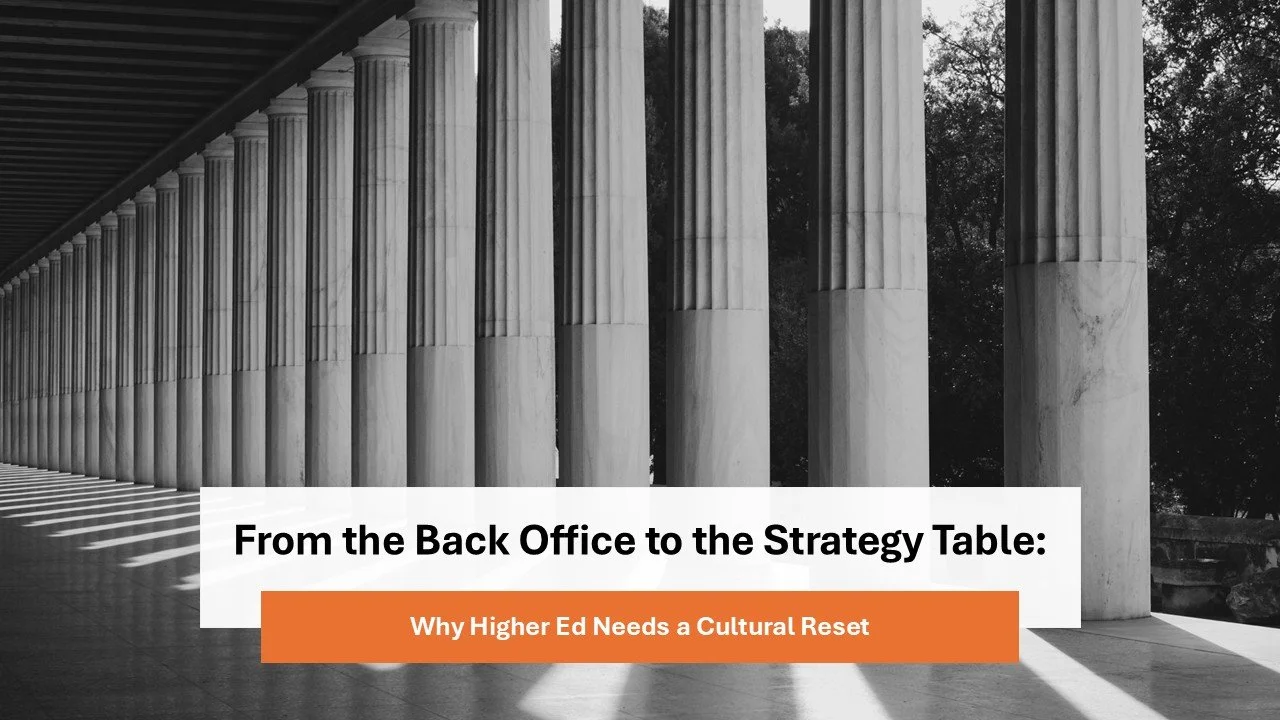From the Back Office to the Strategy Table: Why Higher Ed Needs a Cultural Reset
For decades, finance in higher education has operated behind the curtain—crucial, yet often disconnected from the conversations that shape the future of our institutions. Budgets were built, reports delivered, and progress—at least on the surface—continued.
But what happens when that model begins to break down? When the pressures of rising costs outpace tuition revenue, when external funding dries up or becomes uncertain, and when the equations that once held things together begin to fall apart?
This is not just a financial imperative. It’s a cultural reckoning.
The old playbook—where finance was treated as a back-office function and transformation was a slow, top-down process—no longer serves us. The complexity and pace of today’s challenges demand something different: a shift in how we think, how we collaborate, and how we lead. This is not about fixing what’s broken at the edges. It’s about reimagining what’s possible when we bring finance—and other essential functions—into the heart of strategic conversation.
The kind of leadership we need now is bold, inclusive, and systems-oriented. It means letting go of siloed decision-making and embracing cross-functional collaboration. It means creating environments where challenge is safe, dialogue is intentional, and new thinking is encouraged—even when it disrupts long-standing norms. And it starts with reframing.
Take finance, for example. What if this function—so often perceived as the gatekeeper of “no”—became the catalyst for innovation? In a recent Navigating Change conversation, leaders at Rutgers shared how they’ve made this shift. By moving finance from the sidelines into the center of strategic dialogue, they’ve transformed how their institution approaches decision-making.
This is bigger and more important than managing and balancing the books. It’s about building trust, aligning resources with mission, and engaging academic leaders as co-stewards of the institution’s future. It’s a shift from transactional conversations to generative ones. From adversarial to aligned.
And while finance may be the lens here, this moment reflects a broader truth: the future of higher education belongs to those willing to lead differently. That means moving from compliance to contribution. From reacting to anticipating. From control to connection. It requires us to pause and ask: How do we want to lead—together?
Because in the face of demographic shifts, political headwinds, and rapidly evolving technologies, inaction is not neutral. If we don’t make the difficult choices ahead of us, they will be made for us. This is not a moment to retreat. It’s an invitation—to rethink how we engage with one another, how we navigate complexity, and how we model the very future-readiness we expect of our students.
Higher education has always been in the business of preparing people for what’s next. Now it’s time for our institutions to do the same.

